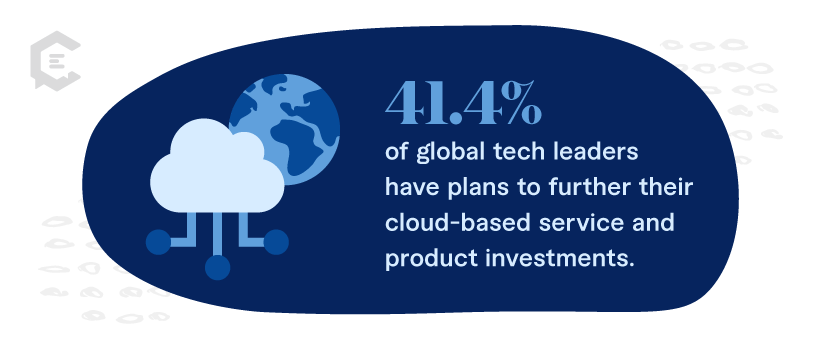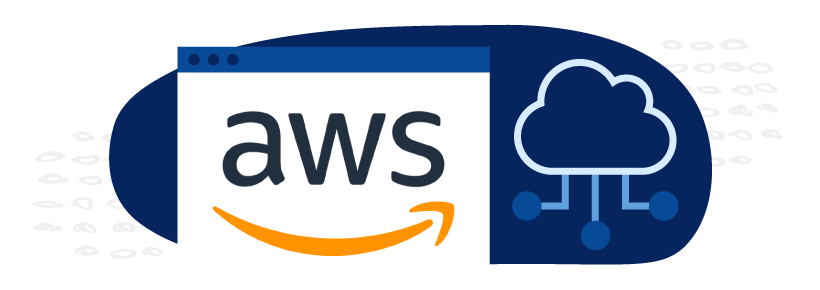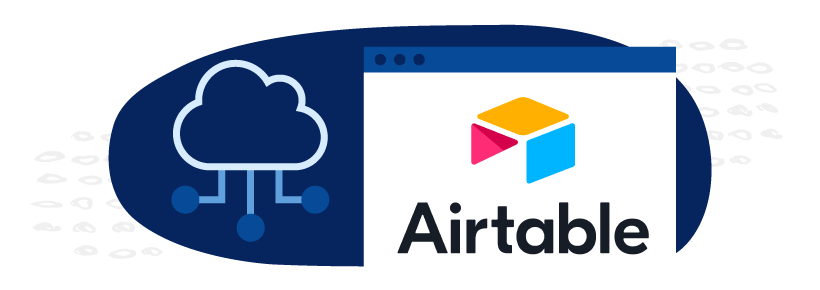On the surface, cloud computing is an easy sell. It delivers IT resources quickly and cost-effectively, helping businesses thrive in the digital landscape.
But to help clients fully realize its benefits, content marketers must consistently educate them on the advantages of cloud computing. And with the high technical barrier, clients can get confused fast.
That’s why we’re going to head off the most common potential pitfalls now.
In this article, we’ll take a closer look at how content marketing works in cloud computing. Then, we’ll break down the most common cloud computing content marketing mistakes people make and how to avoid them.
Understanding Content Marketing in Cloud Computing
Cloud computing providers want to encourage companies to adopt cloud solutions into their business practices. Effective marketing content highlights the best selling points around storing information in a cloud-hosted server, like:
- Better cost savings
- Improved security
- Faster access to company data via mobile devices
- Better collaboration through information sharing
Educating companies about these benefits motivates more businesses to invest in cloud computing. According to the Google Cloud Brand Pulse Survey Q4 2022, 41.4% of global tech leaders have plans to further their cloud-based service and product investments. By this year, companies are looking to dedicate 80% of their total IT spend to cloud solutions.
Cloud computing content marketing can be the difference maker in whether or not they choose to spend that budget on your cloud computing services.
Common Mistakes in Content Marketing for Cloud Computing Providers
Knowing what mistakes to avoid when creating content for cloud computing providers is vital for:
- Building trust and fostering connection.
- Increasing leads and driving conversions.
- Maintaining healthy relationships with future customers.
Mistake 1: Technical jargon overload
Does seeing cloud computing terms like “IaaS” and “IoT” make your head spin when you see them pop up in blog posts? You’re not alone. Content marketers who focus on the features of cloud computing tend to overload their content with technical jargon, much to the dismay of clients trying to decipher the terms.
Why it’s detrimental
The more you confuse your customers, the less they will see the benefits of cloud solutions. Overly technical jargon keeps clients from understanding how cloud computing can solve their problems. They may choose not to invest in cloud computing — or turn to a competitor with more easy-to-understand content.
How to avoid it
Simplify the language in your content. Focus on sharing the benefits of adopting cloud computing into business practices instead of concentrating on product features. For instance, offer case studies of other companies that experienced a good return on investment (ROI) by using your client’s cloud solutions. And find the right balance between creating content for technical and non-technical audiences.
Mistake 2: Lack of educational content
Content creation includes publishing e-books, guides, tutorials, and webinars to explain the concepts and practical applications of products and services to customers. However, many content marketers only promote their products through sales-related content instead of educational content.
Why it’s detrimental
Failing to share a cloud provider’s best practices and insights into industry trends prevents marketers from:
- Establishing providers as thought leaders in the cloud computing industry
- Building trust by educating clients on how to solve problems with cloud computing
- Differentiating themselves from competitors who do not offer educational content
According to Zippia, 94% of enterprises use cloud services. However, not all these enterprises know how to use cloud computing to its full potential. By not offering educational content, marketers miss the chance to turn providers into the go-to source for answers in the cloud computing industry and attract more clients.
How to avoid it
Spend time learning what questions enterprises have about cloud computing. Then, develop a range of educational resources geared at providing answers and applicable solutions. Offer this content through blog posts, videos, and podcasts to meet clients wherever they are.
Just make sure you’re using the right specialist technical writers who know how to distill complex concepts into easily digestible language. Over time, this increases a cloud computing provider’s brand visibility, organic traffic, and qualified leads.
Mistake 3: Neglecting visual elements
Visual representations like charts and diagrams help simplify complex ideas. That’s especially true in the Tech and SaaS content marketing space. Readers can grasp difficult concepts and consume content faster when referring to visual elements. However, not all marketers illustrate their content with visual elements.
Why it’s detrimental
Cloud computing is a complex subject. Explaining it only through large blocks of text overwhelms readers. This leads to high bounce rates and low shareability from readers who would prefer to see complex topics explained through simple visual representations.
How to avoid it
Incorporating infographics, charts, and other visual elements into the text makes cloud computing content easier to comprehend and digest. Readers who grasp complex ideas quickly will be more likely to share the content with others. This increases the cloud computing provider’s online visibility, improving brand awareness.
Case Studies: The Consequences of Content Marketing Mistakes and the Benefits of Avoiding Them
Acknowledging cloud computing content marketing mistakes allows marketers to sidestep potential minefields and position providers as leaders in the industry. Let’s look at some case studies that illustrate this.
Case Study 1: Amazon Web Services
Amazon Web Services (AWS) is a cloud service provided by Amazon that offers infrastructure technologies like storage and databases along with emerging technologies like artificial intelligence. While this makes its cloud services more cost-effective for companies, the number of features intimidates new customers.
To familiarize clients with AWS features, Amazon’s content marketers created a free library of digital training courses. This content explains complex topics such as the Internet of Things and machine learning algorithms to the uninitiated. Users can take courses designed specifically for cloud practitioners, developers, or solutions architects. They can also take courses that focus on solutions, such as advanced networking, data analytics, or security.
Not only does this library provide educational content that establishes Amazon as a useful source of cloud computing information, but it also helps market Amazon’s specific cloud services. Users who find the free content useful can pay for in-person classes, allowing its content to promote additional Amazon products and services.
Case Study 2: Airtable
Tech and SaaS industry company Airtable is a cloud collaboration platform that offers multiple resources on its website for using its platform. It organizes its content in sections that share customer stories, industry news, and educational materials. The content is categorized to target different audiences, making it easy for visitors to find the resources they need, increasing time spent on the site, and decreasing bounce rate.
Although Airtable provides technical content for developers, it also offers step-by-step guides and tutorials for layman audiences. Other content includes customer stories and case studies that reveal how its platform helped different companies overcome challenges.
All this helps Airtable reach multiple target audiences and provide easily digestible content for a variety of potential clients.
Embracing The Learning Process in Content Marketing
Hopefully, this article saves you some headaches by helping you preemptively avoid pitfalls other marketers have fallen into. But everyone makes mistakes. The important thing is that you learn from them and adjust your content and strategy accordingly.
Another way you can fortify your content strategy is by partnering with a content agency that already knows the road. For example, at ClearVoice we’ve spent over a decade working with hundreds of companies, helping them produce high-quality content that drives success.
When you work with us, you get access to a wide range of vetted, top-tier software and tech writers who are happy to bring their expertise and skill set to your content creation.
Connect with us today to see how we can elevate your cloud computing content marketing to the next level (while also saving you time and money).









